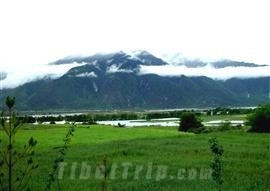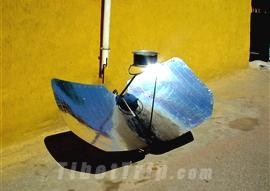
 Fauna and Flora
Fauna and Flora
There are more than 700 vertebrate species living in Tibet, 123 of which are under the national key protection---- a third of the total within China. The Qinghai-Tibet Plateau is typically home to such rare animals as chirus, kiangs, wild yaks and argolis, it is also where China's unique, Thorold's Deer and endangered species such as black-necked cranes are to be found. Of the the million or so terrestrial animal species that have so far been described about 85% are insects. Due to its unique variety of climatic conditions some twenty five per cent of all insect types can be found in Tibet. Of these the Zorotypus sinensis Huang and Zorotypus medoensis Huang are under national protection.
One of China's five largest forest regions, Tibet has an area of 7,170,000 hectares (27,683 sq miles) of virgin forests, with plant species ranging from tundra to tropical. Most densely distributed in the southeast, to be more specific, along the Great Canyon of the Yarlung Tsangpo River, 20% of the plants are peculiar to Tibet and over 6,000 species are classified as higher plants. Except for the economic plants in use of making fabrics, spices, food and paper, etc, Tibet has one of the greatest resources of medicinal herbs, which number up to 1,000, including 300 kinds of rare Tibetan herbs such as cordyceps, ganodermas and snow lotuses.
 Nature Reserves
Nature Reserves
By the end of 2005, nine national and six regional nature reserves have been opened in Tibet, covering a total area of 408,300 hectares (1,576 sq km), the largest in China.
Directory of National and Regional Natural Reserves in Tibet (by the end of 2005)
| Name | Grade | Location | Date of Establishment | Focus Protection |
| Lhalu Wetland Nature Reserve | National | Lhasa | 1999-1-1 | Wetland Ecosystem |
| Middle Yarlung Tsangpo River Nature Reserve for Black-necked Cranes | National | Lhundup County, Lhasa | 1993-1-1 | Black-necked Cranes and the Ecosystem of the Habitat |
| Riwoche Nature Reserve for Red Deer | National | Riwoche County, Chamdo | 2001-1-1 | Red Deer and the Ecosystem of the Habitat |
| Markham Nature Reserve for Yunnan Golden Monkey | National | Markham County, Chamdo | 1993-1-1 | Yunnan Golden Monkey and the Ecosystem of the Habitat |
| Mt. Everest | National | Shigatse | 1988-4-5 | Ecosystems of Mountains, Forests and Deserts |
| Xainza Nature Reserve for Black-necked Cranes | National | Xainza County, Nakchu | 1993-1-1 | Black-necked Cranes, Ecosystem of the Highland Wetland |
| Changtang Nature Reserve | National | Northern Tibet | 1993-4-4 | Ecosystem of Deserts |
| Great Canyon of the Yarlung Tsangpo River | National | Pemako County, Nyingchi | 1985-7-9 | Vertical Spectrum of Tropical Mountain Plants, Rare Fauna and Flora |
| Dzayul Nature Reserve | National | Dzayul County, Nyingchi | 1985-1-1 | Ecosystem of Sub-tropical Mountain Forests |
| Lake Namtso | Regional | Nakchu | 2001-1-1 | Wild Animals, Ecosystem of Wetland |
| Shigatse Karst Nature Reserve | Regional | Shigatse City | 2000-1-2 | Karst Topography |
| Zanda Clay Forest | Regional | Zanda County, Ngari | 2000-1-2 | Clay Forest |
| Ngamring Nature Reserve for Terrestrial Heat Fountains | Regional | Ngamring County, Shigatse | 2000-1-2 | Thermal springs |
| Huge Cypress Nature Reserve | Regional | Pagqi Village, Nyingchi | 1985-1-1 | Huge Cypresses, Forest Ecosystem |
| Kongpo Nature Reserve | Regional | Nyingchi | 2003-1-1 | Forest Ecosystem |

 Mineral and Energy Resources
Mineral and Energy Resources
Tibet boasts the largest reserves of chromite in China, covering a total area of 2,500 sq m (965 sq miles) and totaling approximately to 10 million tons. Meanwhile, in 1999 an abundance of lithium carbonate was discovered and the Zabuye Salt Lake in the Shigatse Region has become not only the largest lithium base in China but the world's second richest salt lake brine resource. So far over 100 varieties of mineral have been found in Tibet, 11 of which, including conundrum, copper, boron and isinglass, etc., rank as the national top five reserves. The potential for other minerals such as gold, silver, lead and zinc is prospected.
At an average altitude of 4,000m (13,123 ft), Tibet has the nation's greatest potential for solar energy, one of the top global locations for such power. A network of rivers crisscrossing the country theoretically provides a huge water energy resource of 200 million kilowatts, nearly 30% of the national total; together with an annual wind energy resource of 93 billion kilowatt-hours thereby ranking Tibet as the seventh in all China. Yangpachen, China largest geothermal energy station, supplies 45% of electricity required by Lhasa and the total geothermal energy resource in Tibet covers 80% of that in China.








